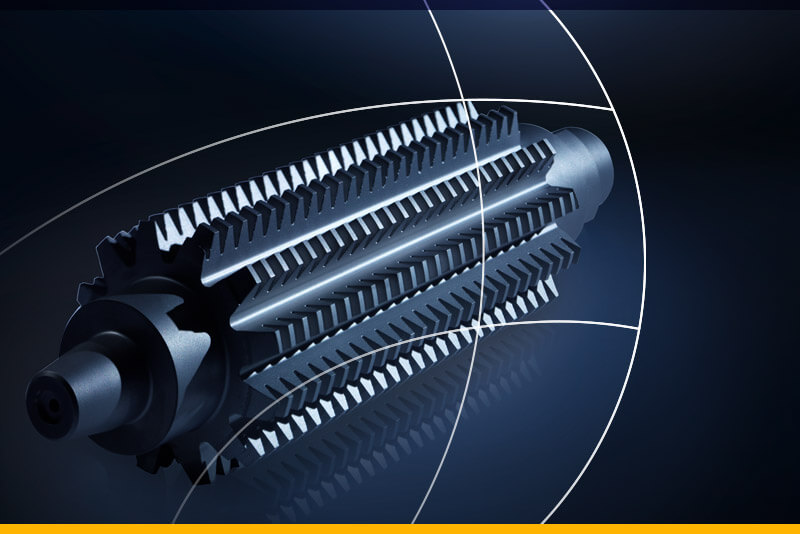- PVA TePla Korea
- Technologies
- Overview Vacuum Furnace Systems
- Powder Metallurgy
Powder metallurgical processes are particularly useful when components with complex geometries need to be manufactured in large quantities. Shaping green bodies via suitable pressing tools and molds and subsequently sintering them enable components to be made in forms close to their final profiles, which means that mechanical processing of the components is kept to a minimum. Consequently, powder metallurgical processes constitute an interesting alternative to conventional mechanical production methods in terms of efficiency and cost-effectiveness, particularly in the case of mass production applications.
Powder metallurgical processes are also often the only option for technical reasons. This is the case especially when materials that cannot undergo melting metallurgy, or can do so only with great difficulty, are to be used. In addition to refractory metals with high melting points (tungsten, tantalum), these include ceramic materials and composites, such as the group of cemented carbides, that have long received particular emphasis at PVA.
Many materials exhibit adequate properties when sintered in protective gas atmospheres. To achieve greater density and purity, there is often merit in sintering in a vacuum, as this largely prevents gas cavities from forming during the sintering process, and degassing processes during the pre-sintering phase can be made especially effective in a vacuum.
PVA TePla manufactures furnaces for sintering metals, non-oxide ceramics, cermets, or cemented carbides, which receive particular attention at PVA. Cemented carbides are sintered in the liquid phase, whereby the metal binder contained in the pellet—usually cobalt—is used for melting and binds the cemented tungsten carbide powder in the pellet. Cemented carbide parts sintered in a vacuum generally have a density in excess of 99%, which means that they meet most material requirements for current applications.
About our
vacuum sintering furnaces (COV, MOV)
Sintering in a pressurized gas atmosphere is particularly beneficial for certain types of non-oxide ceramic, cemented carbide and cermet. While gas pressure acts as a stabilizer for the chemical compounds in ceramics, its effect in the case of pressure sintering of cemented carbides is that the binder metals (cobalt) can be distributed more evenly in the body—i.e. pushed into the cemented carbide matrix more effectively—than is sometimes possible in a vacuum. This means that the density and therefore material characteristics can be increased further.
The compressed gas is introduced into the process chamber only when the sintering process is already well advanced, the formerly porous sintered pressed parts have already contracted, and a sealed cobalt surface has formed.
About our
Sinter HIP furnaces (COD)
